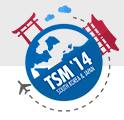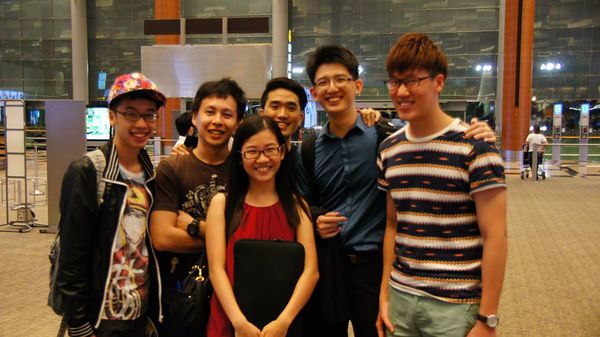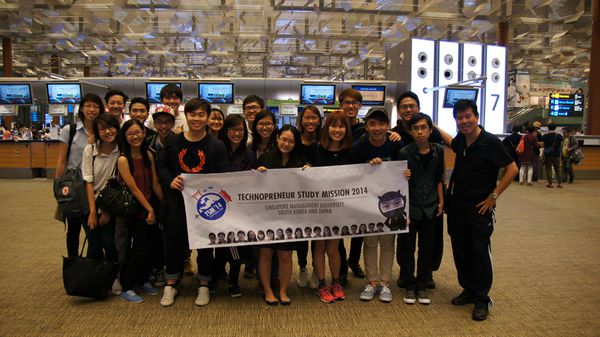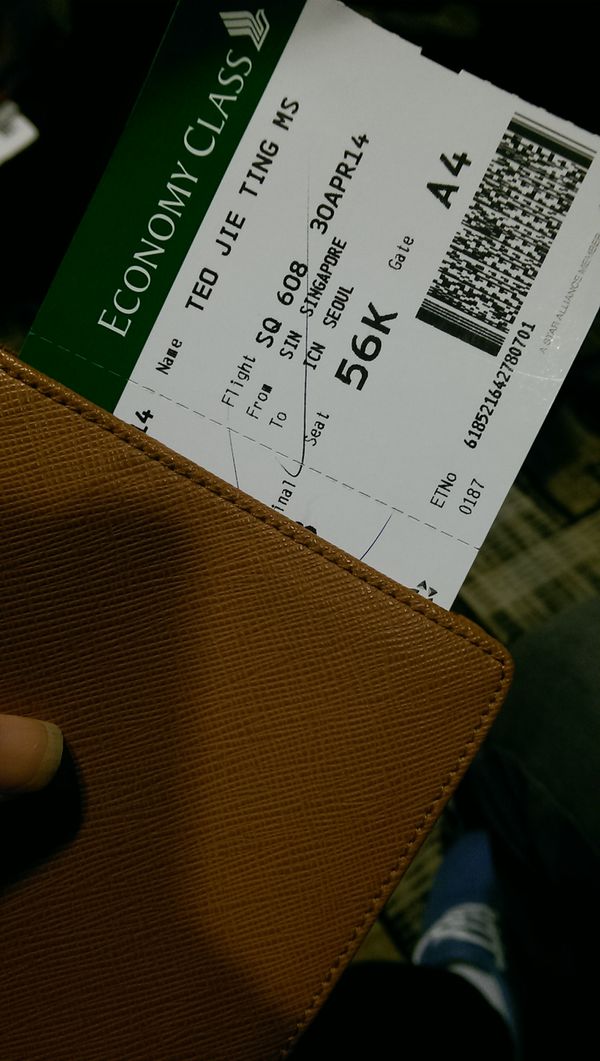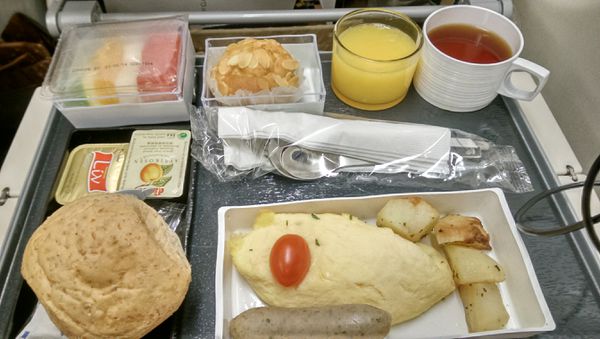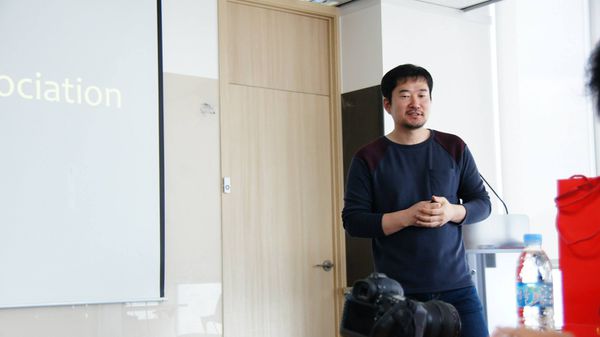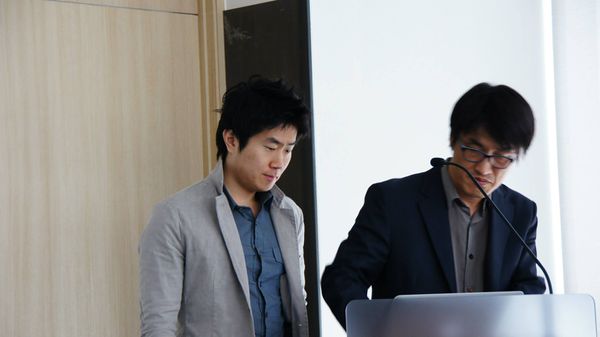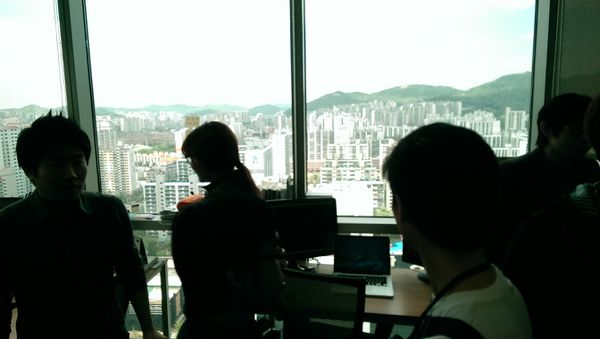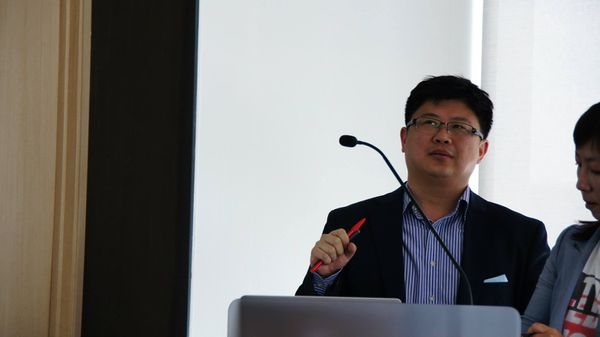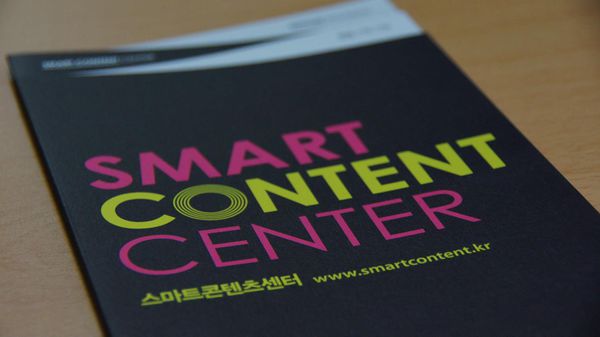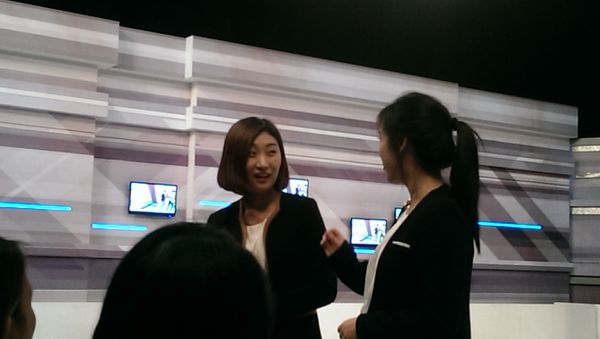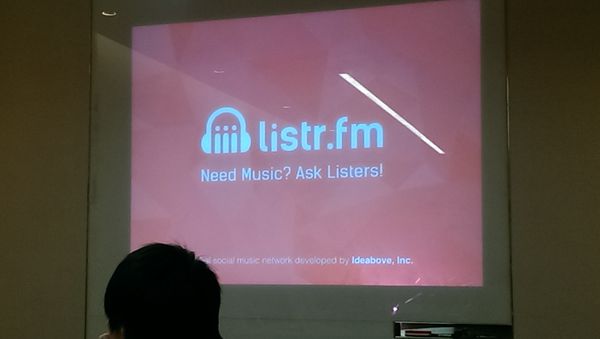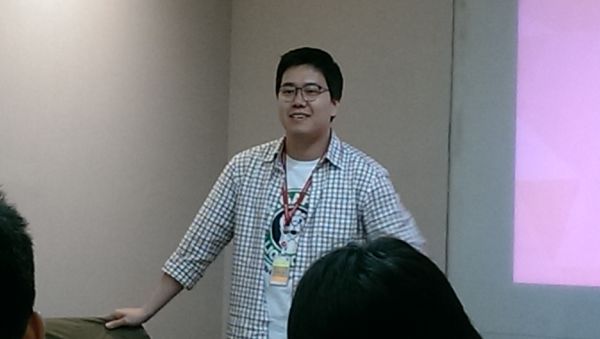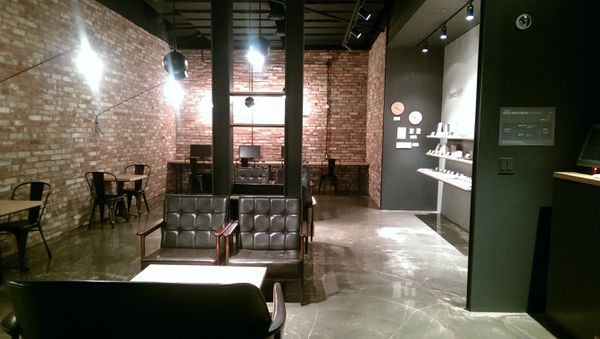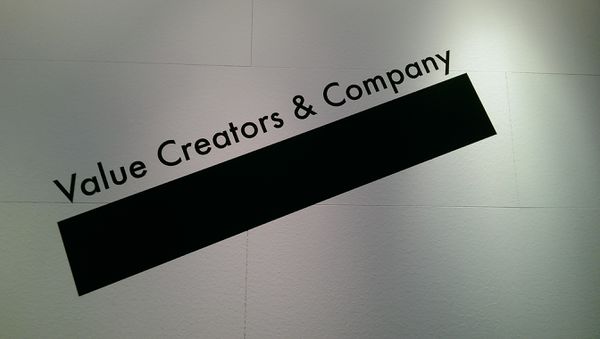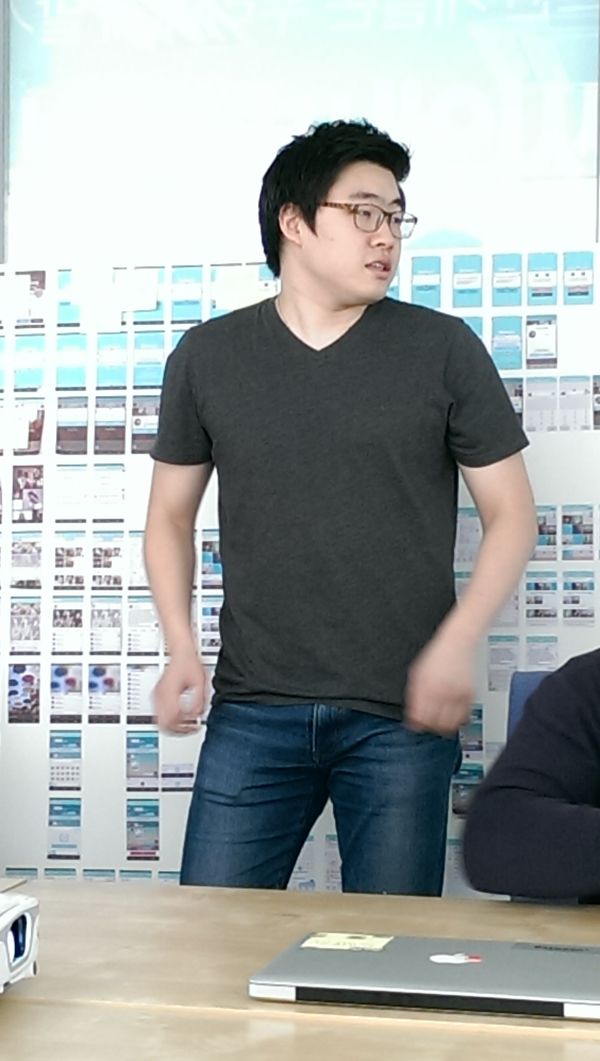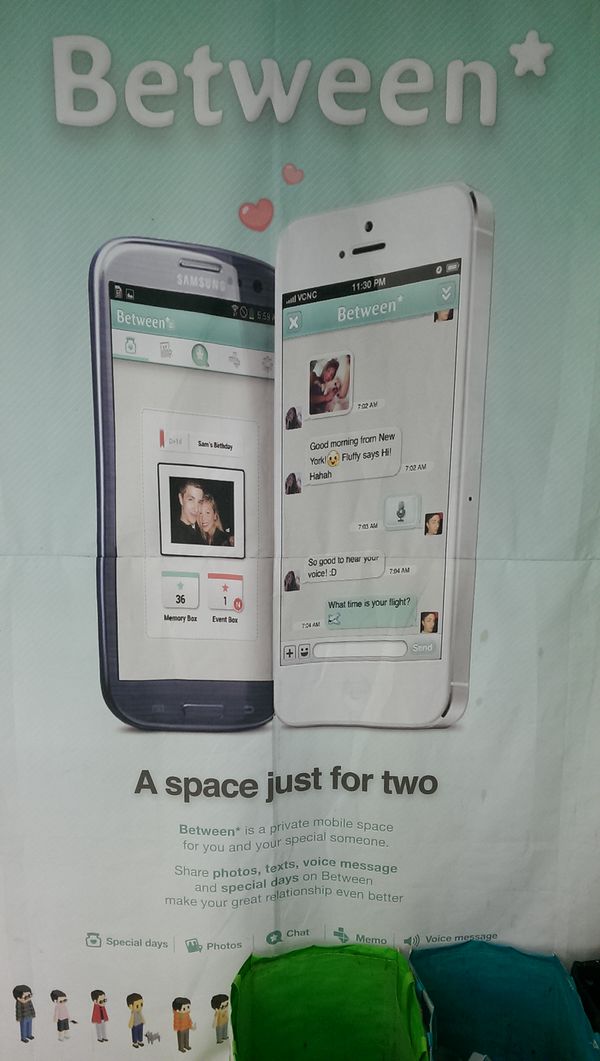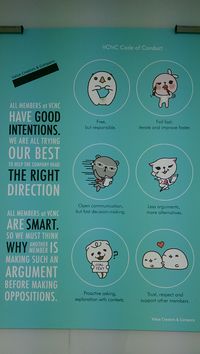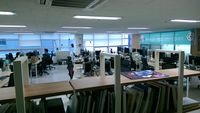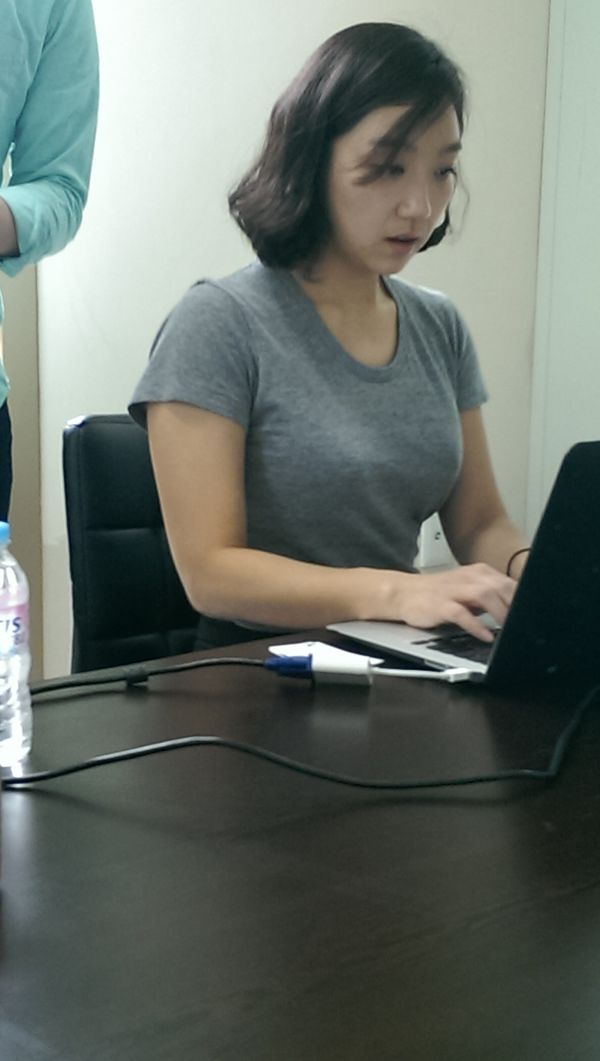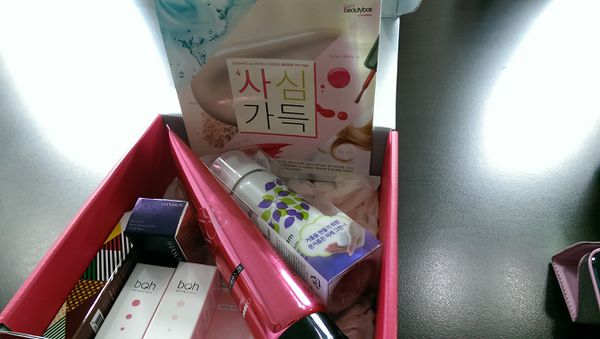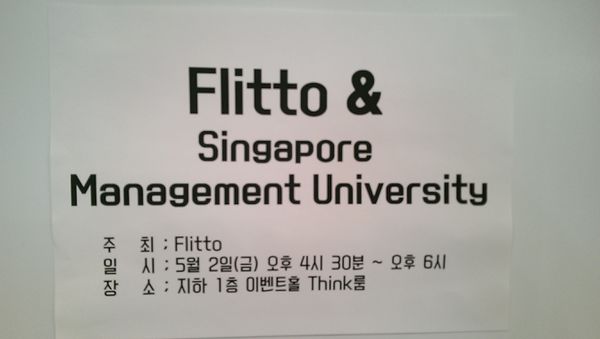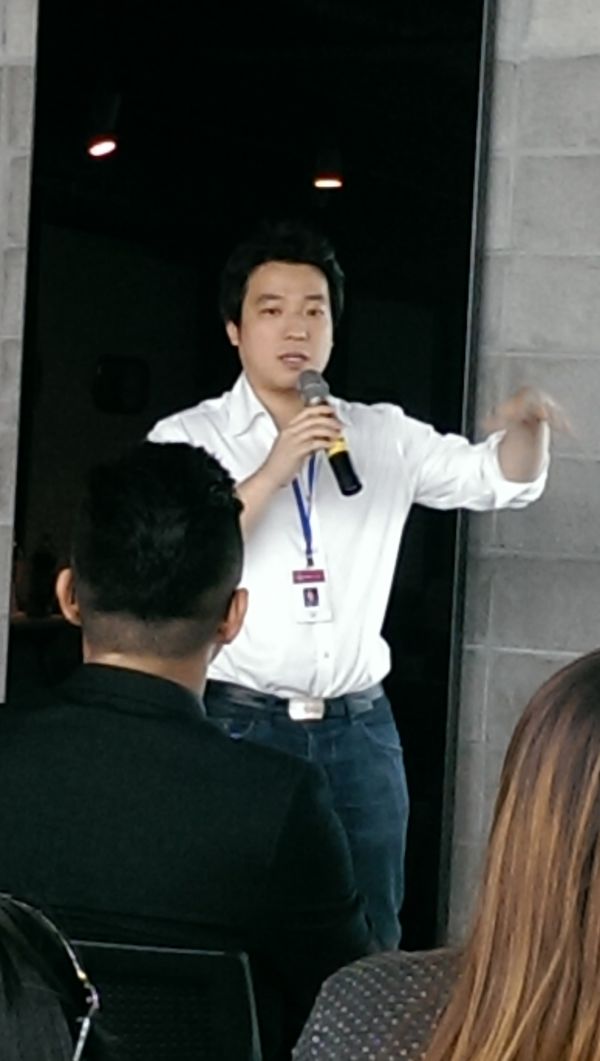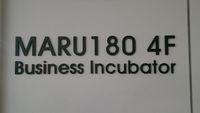Difference between revisions of "1314T2g1 South Korea/Participant Information/Teo Jie Ting/DuringTrip"
| (4 intermediate revisions by the same user not shown) | |||
| Line 105: | Line 105: | ||
</div> | </div> | ||
<!-- END (2) --> | <!-- END (2) --> | ||
| + | |||
<!-- START (3) --> | <!-- START (3) --> | ||
<div style="font-size: 20px; color: #474747; font-weight: bold; font-family:Arial; letter-spacing: -1.5px;">Lasso</div> | <div style="font-size: 20px; color: #474747; font-weight: bold; font-family:Arial; letter-spacing: -1.5px;">Lasso</div> | ||
| Line 119: | Line 120: | ||
</div> | </div> | ||
<!-- END (3) --> | <!-- END (3) --> | ||
| + | |||
| + | |||
<!-- START (4) --> | <!-- START (4) --> | ||
<div style="font-size: 20px; color: #474747; font-weight: bold; font-family:Arial; letter-spacing: -1.5px;">SCC</div> | <div style="font-size: 20px; color: #474747; font-weight: bold; font-family:Arial; letter-spacing: -1.5px;">SCC</div> | ||
| Line 124: | Line 127: | ||
SCC is the incubating company behind the above two companies mentioned. SCC is a government funded incubator which offers support for smart content startups in Korea. | SCC is the incubating company behind the above two companies mentioned. SCC is a government funded incubator which offers support for smart content startups in Korea. | ||
| + | [[Image:Jieting-Scc-founder.jpg|600px|center]] | ||
| + | One interesting thing about SCC is that they do not have any entity in the startups they incubated. I feel that this is rather different from what we have in Singapore as there are different schemes for funding / support for startups. Also, SCC offers incubation program for 2 years, which seems to be rather different from what Singapore has. As my FYP has been offered incubation from IIE and external parties, SCC programs sound like a much better option as it would be a lesser load on the startup companies’ shoulders as extensive support (e.g. testing devices, servers, consultation etc) has been provided for free for 2 years. Hence, i feel that this may be a reason why Korea’s startup environment has been growing, where there are strong support for their operations from the government and their incubator. | ||
| + | |||
| + | [[Image:jieting-Scc-brochure.jpg|600px|center]] | ||
</div> | </div> | ||
<!-- END (4) --> | <!-- END (4) --> | ||
| + | |||
| + | |||
<!-- START (5) --> | <!-- START (5) --> | ||
<div style="font-size: 20px; color: #474747; font-weight: bold; font-family:Arial; letter-spacing: -1.5px;">KBS</div> | <div style="font-size: 20px; color: #474747; font-weight: bold; font-family:Arial; letter-spacing: -1.5px;">KBS</div> | ||
<div style="font-family:Arial; color:#5f5f5f; letter-spacing: -0.5px; font-size: 14px; text-align: justify;"> | <div style="font-family:Arial; color:#5f5f5f; letter-spacing: -0.5px; font-size: 14px; text-align: justify;"> | ||
| − | + | After lunch, we proceed to KBS for our 4th visit for the day. The lady who hosted us was very nice and welcoming. | |
| + | |||
| + | We toured around KBS and were being brought to different sets, the props room, news reporting department and even to a live recording! The lady had really gone through great effort to help us get approval for our tours and to bring us around (i heard that we were the one and only student group that were allowed to enter a live recording and many other places which have restricted access to only the staff). | ||
| + | |||
| + | [[Image:Jieting-KBS-host.jpg|600px|center]] | ||
| + | |||
| + | While touring around, we were also giving explanations and descriptions about the recordings that KBS does. We were all shocked when they say that a recording for an hour long show would usually take up to 4-6hrs of recording. Wow! | ||
| + | |||
| + | [[Image:Jieting-KBS-news_table.jpg|600px|center]] | ||
| + | Everyone had a chance to sit at the news anchor chair and experience the feeling of broadcasting news for the first time! | ||
</div> | </div> | ||
<!-- END (5) --> | <!-- END (5) --> | ||
| + | <!-- START (6) --> | ||
| + | <div style="font-size: 20px; color: #474747; font-weight: bold; font-family:Arial; letter-spacing: -1.5px;">Conclusion</div> | ||
| + | <div style="font-family:Arial; color:#5f5f5f; letter-spacing: -0.5px; font-size: 14px; text-align: justify;"> | ||
| + | The first day of TSM was really an eye-opener as we visited companies from a variation of industries. Also, the bonds between everyone in the TSM family starts to get stronger as the time past by and I can’t wait for the second day to commence! | ||
| + | </div> | ||
| + | <!-- END (6) --> | ||
| + | <!-- START (7) --> | ||
| + | [[Image:Jieting-Day_2.png|600px|center]] | ||
| + | <div style="font-size: 26px; color: #474747; font-weight: bold; font-family:Arial; letter-spacing: -1.5px;">Company Visit</div> | ||
| + | |||
| + | |||
| + | <div style="font-size: 20px; color: #474747; font-weight: bold; font-family:Arial; letter-spacing: -1.5px;">Idea Above</div> | ||
| + | <div style="font-family:Arial; color:#5f5f5f; letter-spacing: -0.5px; font-size: 14px; text-align: justify;"> | ||
| + | As today is the Labor Day, we had only one company visit - Idea Above. Firstly, we are really grateful for the team from Idea Above who took time out and meet us despite it being a public holiday in Korea. Thank you! | ||
| + | |||
| + | Before arriving in Singapore, we met the founder and two other interns during our pre-trip briefing. Idea Above is the company behind listr.fm. Listr.fm is a social music player application (somewhat like Spotify) which provide an easier way for sharing and recommending of music among friends. Not only that, there are commenting function implemented right in the application, which opens up another market for users who are in a band and need a way to discuss about the music to choose etc. | ||
| + | |||
| + | [[Image:Jieting-Listrfm.jpg|600px|center]] | ||
| + | |||
| + | Ian, the founder, gave us a really thorough analysis about the market listr.fm is in and shared some of the difficulties faced during his journey in setting up listr.fm. I felt that listr.fm, though nothing new, has a really great potential as Ian and his team is looking at providing analysis on how music are being shared among people and hence, identifying the “ambassador” among the users. By doing so, listr.fm would be able to provide critical information to the label companies in terms of when there’s a new music release by a particular artists, which “ambassador” to push the music to so that they would be the one spreading it to their circle of friends. This would then be another form of marketing and outreach for the label companies asides from the traditional marketing means. | ||
| + | |||
| + | [[Image:Jieting-Idea_above_founder.jpg|600px|center]] | ||
| + | |||
| + | One interesting point that Ian brought up was that he strongly believes that there is no need for a revenue model as, “when there’s sufficient users, you will naturally have a revenue model”. This is quite a new point that i’ve came across and felt that it was a really true point. Like what my FYP mentor, Mr Robert Chew, always mention, we do not have to worry about how to get money, instead we should worry about how to get users first. | ||
| + | |||
| + | We were also given a tour around the office and the ambience of the office is really great! | ||
| + | |||
| + | [[Image:Jieting-Idea_Above_basement.jpg|600px|center]] | ||
| + | </div> | ||
| + | <!-- END (7) --> | ||
| + | |||
| + | |||
| + | <!-- START (8) --> | ||
| + | <div style="font-size: 20px; color: #474747; font-weight: bold; font-family:Arial; letter-spacing: -1.5px;">Conclusion</div> | ||
| + | <div style="font-family:Arial; color:#5f5f5f; letter-spacing: -0.5px; font-size: 14px; text-align: justify;"> | ||
| + | After 2 days of company visit, i realised that the founders of the startup are always very passionate about their application and they believed strongly in it. I feel that this is a very important point, especially for the founding team, as they would be the one who set the tone in the company culture. Also, the founding team always know the market they’re targeting at like the back of their hands, which i believe may be lacking in my FYP team once in a while. | ||
| + | |||
| + | Ian also shared with us a story about one of his co-founder who had a strong passion for music and was a band player. One day he got paralysed and couldn’t move use his right hand anymore. However, he never gave up his passion and had been coding out listr.fm with only his left hand. This story really made me think hard about the obstacles and failures faced by my own team once in awhile. From the story shared by Ian, i really felt that one should stand firm on their own passion and not give up easily with the obstacles faced. | ||
| + | </div> | ||
| + | <!-- END (8) --> | ||
| + | <!-- START (9) --> | ||
| + | [[Image:Jieting-Day_3.png|600px|center]] | ||
| + | <div style="font-size: 26px; color: #474747; font-weight: bold; font-family:Arial; letter-spacing: -1.5px;">Company Visit</div> | ||
| + | |||
| + | |||
| + | <div style="font-size: 20px; color: #474747; font-weight: bold; font-family:Arial; letter-spacing: -1.5px;">VCNC</div> | ||
| + | <div style="font-family:Arial; color:#5f5f5f; letter-spacing: -0.5px; font-size: 14px; text-align: justify;"> | ||
| + | VCNC is a startup company behind the application, between. Between is a mobile application aim at providing a private channel for couples to share their memories together. The idea is rather similar with a Singapore-based mobile application, LoveByte. However, one interesting feature that i foresee would be of great use for couples would be the shared calendar. With a shared calendar, couples are able to view each other’s schedule easily and hence making the planning of meet ups much more easier. | ||
| + | |||
| + | [[Image:Jieting-VCNC.jpg|600px|center]] | ||
| + | |||
| + | Although we did not have the founder to present to us, we had a really nice co-founder, Edward, who’s really nice and knows exactly how to answer questions and explaining the plans of VCNC and between clearly and firmly. | ||
| + | |||
| + | [[Image:Jieting-VCNC-edward.jpg|600px|center]] | ||
| + | |||
| + | One interesting point brought up by Edward is the marketing strategy of Between. Edward mentions that VCNC takes the “fear of missing out” approach where they customises different marketing messages based on the market they’re targeting. For example in Korea, couples are more open with their affections and they’re, in Edward’s words, crazy about dating and love. As such, what VCNC did was to use symbolic text and market between as the virtual ring for couples. | ||
| + | |||
| + | [[Image:Jieting-VCNC-between.jpg|600px|center]] | ||
| + | |||
| + | |||
| + | Personally to me, this is a very good pointer to note for startups as sometimes we may be in the situation where we find it hard to market the application. By understanding the market you’re in and knowing what captures the attention of the targeted users, it would then make it much easier to market the application in the way that resonates with the users. | ||
| + | |||
| + | Being a very successful startups which had won numerous awards and mentions in different publications, i was also interested in the company culture and how VCNC operates. From what Edward mentions, VCNC has a very parallel company culture yet at the same time, making sure everyone is equally responsible for what they’re tasked to do. For every half a year, VCNC has a workshop that get the employees down and discuss about the company direction as “everyone has a mind of their own”. I felt that this was really important to have a annual meet up among all the employees so that everyone will be updated of the company’s progress and future plans, and at the same time, getting feedbacks and understanding the concerns of the employees. | ||
| + | |||
| + | Also, Edward mentions that it’s important to have a strong foundation before venturing into various options of providing more new features. I believe this is very important as a good foundation would determine how scalable the application is in the long run. This is also similar to what my FYP mentor mentioned. He mentioned that we should focus on getting a Minimum-Viable Product (MVP) and releasing it rather than releasing a very sophisticated application with a lot of features in it. | ||
| + | |||
| + | After the presentation, we were allowed to tour around the office and here are some interesting things that caught my attention: | ||
| + | {| border="0" class="wikitable" style="margin:1em auto 1em auto; height:50px; width: 500px;" | ||
| + | |+ | ||
| + | |- | ||
| + | !scope="row" style="padding: 5px; text-align: center; font-family:Arial; letter-spacing: -0.5px; font-size: 14px; text-align: center; font-weight:bold;"| | ||
| + | [[Image:JIeting-VCNC-prototypeboard-all.png|200px|center]] | ||
| + | |style="padding: 5px; text-align: center; font-family:Arial; color:#5f5f5f; letter-spacing: -0.5px; font-size: 14px; text-align: center;"| | ||
| + | I was really amazed by the details on the prototyping board. There are even exact dimensions and measurements to where the text box should be positioned, how the button should look like. I think the way the prototyping board was set up is rather collaborative. They make use of sticky notes for discussion about the prototype rather than drawing on the prototype directly. I feel that this makes the whole prototype board much neater and they could collect a chunk of sticky notes and discuss before coming up with a new set of prototypes. This is somewhat similar to the idea of re-drawing parts of the prototype and matching it to see how it goes. | ||
| + | |- | ||
| + | !scope="row" style="padding: 5px; text-align: center; font-family:Arial; letter-spacing: -0.5px; font-size: 14px; text-align: center; font-weight:bold;"| | ||
| + | [[Image:Jieting-VCNC-codeofconduct.jpg|200px|center]] | ||
| + | |style="padding: 5px; text-align: center; font-family:Arial; color:#5f5f5f; letter-spacing: -0.5px; font-size: 14px; text-align: center;"| | ||
| + | This picture shows the code of conduct of VCNC which i strongly believe would be a very useful guidelines for a successful company. I would be sharing this set of guidelines with my FYP mates in preparation for our startup. | ||
| + | |- | ||
| + | !scope="row" style="padding: 5px; text-align: center; font-family:Arial; letter-spacing: -0.5px; font-size: 14px; text-align: center; font-weight:bold;"| | ||
| + | [[Image:Jieting-VCNC-opencompany.jpg|200px|center]] | ||
| + | |style="padding: 5px; text-align: center; font-family:Arial; color:#5f5f5f; letter-spacing: -0.5px; font-size: 14px; text-align: center;"| | ||
| + | A very open-styled office with NO partitions between the employees. A rather unique office style compared to those in Singapore or other big companies where there are still a few partitions between employees. | ||
| + | |- | ||
| + | |} | ||
| + | </div> | ||
| + | <div style="font-size: 20px; color: #474747; font-weight: bold; font-family:Arial; letter-spacing: -1.5px;">Meme Box</div> | ||
| + | <div style="font-family:Arial; color:#5f5f5f; letter-spacing: -0.5px; font-size: 14px; text-align: justify;"> | ||
| + | Koreans have undeniably good skin complexion and a wide variety of beauty and cosmetic products. As such, it’s not a surprise when people around the world wish to know the “secret” products used by Koreans to have such good skin complexion like them and are willing to pay a sum of amount for a box that contains different variety of beauty products under a certain theme. | ||
| + | |||
| + | [[Image:Jieting-Memebox-presentor.jpg|600px|center]] | ||
| + | |||
| + | |||
| + | Memebox aims to be a lifestyle store where the products it sold not only related to cosmetic, but also related to beauty and the products that make a woman more beautify. The way memebox markets itself is through the sending boxes of sample to bloggers and youtubers, hoping they will do a review if they love the product. These people are usually influential who have the power to influence others to do the same. This is another form of marketing that startup could look at, by targeting influential people in the social network and have them “advertise” for you. I believe that such a method would be successful as the generation now are more tech-savvy and are active users of different social networking platforms | ||
| + | |||
| + | One interesting thing about memebox is that the employees will first test out the products themselves and talk to the brands before determining which product to put in the box. Of course, there are still other factors like the theme of the box, the price (they would want not want to give only samples). | ||
| + | |||
| + | [[Image:Jieting-Memebox-content.jpg|600px|center]] | ||
| + | </div> | ||
| + | <div style="font-size: 20px; color: #474747; font-weight: bold; font-family:Arial; letter-spacing: -1.5px;">Flitto</div> | ||
| + | <div style="font-family:Arial; color:#5f5f5f; letter-spacing: -0.5px; font-size: 14px; text-align: justify;"> | ||
| + | Flitto is a crowd-sourcing translation platform which provides accurate, cost effective and fast translation through users' mobile phone. Being an application that depends on crowd-sourcing also, Flitto also faces the chicken and egg problem - should Flitto focuses on getting translator or should they focus on getting request for translation? The solution Flitto took was to do translation about artists’ news on twitter and retweet it back to the artists themselves. Slowly, people start to gain notice of the application and hence, both the translator and translation requests would come in at the same time. | ||
| + | |||
| + | [[Image:Jieting-Flitto-welcome.jpg|600px|center]] | ||
| + | |||
| + | We were very very lucky to be able to meet Mr Simon, who’s a very humorous and charismatic founder of Flitto. | ||
| + | |||
| + | [[Image:Jieting-Flitto-founder.jpg|600px|center]] | ||
| + | |||
| + | |||
| + | Before we visit Flitto’s office, we had a small tour around Maru180, the incubator office of Flitto. Here are some pictures of Maru180. | ||
| + | {| border="0" class="wikitable" style="margin:1em auto 1em auto; height:50px; width: 500px;" | ||
| + | |+ | ||
| + | |- | ||
| + | !scope="row" style="padding: 5px; text-align: center; font-family:Arial; letter-spacing: -0.5px; font-size: 14px; text-align: center; font-weight:bold;"| | ||
| + | [[Image:Jieting-Flitto-maru.jpg|200px|center]] | ||
| + | |style="padding: 5px; text-align: center; font-family:Arial; color:#5f5f5f; letter-spacing: -0.5px; font-size: 14px; text-align: center;"| | ||
| + | Maru180 - the incubator office of Flitto | ||
| + | |- | ||
| + | !scope="row" style="padding: 5px; text-align: center; font-family:Arial; letter-spacing: -0.5px; font-size: 14px; text-align: center; font-weight:bold;"| | ||
| + | [[Image:Jieting-Flitto-office.jpg|200px|center]] | ||
| + | |style="padding: 5px; text-align: center; font-family:Arial; color:#5f5f5f; letter-spacing: -0.5px; font-size: 14px; text-align: center;"| | ||
| + | A cafe in Maru180. Such a great place for brainstorming and meeting with clients! | ||
| + | |- | ||
| + | |} | ||
| + | Mr Simon also shared his advice for budding entrepreneurs which I think some of them are very good advices, and strongly encourage any budding entrepreneurs to take note of them: | ||
| + | |||
| + | <b>1. Talk to as many people about your idea as possible</b> | ||
| + | Talking to many people about your idea would open the idea up for more criticism and also feedbacks and ways to improve. Some may be worried that by telling others their idea, their own idea will failed. Yet according to Mr Simon, if your idea won’t fail, it won’t fail even if someone else “copied” you. A great point to remember to not be too worried about getting copied. | ||
| + | |||
| + | <b>2. Start a company with what you’re passionate about and fits your dreams</b> | ||
| + | This has been by far the most visible traits in all the founding teams. All the founders/members of the management team that hosted us were all passionate about their idea, plan and application. They were all burning with faith and love for their own products and had plans to bring it to greater heights. Some of them even quit their previous jobs (which can be rather high paying) just to start a company. I feel that this is a very brave move that they’re all willing to take for their passion and to build their dreams. | ||
| + | </div> | ||
| + | <div style="font-size: 20px; color: #474747; font-weight: bold; font-family:Arial; letter-spacing: -1.5px;">Conclusion</div> | ||
| + | <div style="font-family:Arial; color:#5f5f5f; letter-spacing: -0.5px; font-size: 14px; text-align: justify;"> | ||
| + | All the three companies that we’ve visited today were rather successful with a certain level of traction achieved. They’ve provided many advices and learning points through their presentations and the Q&A. | ||
| + | </div> | ||
| + | <!-- END (9) --> | ||
| + | <!-- START (10) --> | ||
| + | [[Image:Jieting-Takeaway-korea.png|600px|center]] | ||
| + | <div style="font-family:Arial; color:#5f5f5f; letter-spacing: -0.5px; font-size: 14px; text-align: justify;"> | ||
| + | |||
| + | We’ve came to the end of our company visits in Korea. To sum up, i’ve really learnt a lot from the startups. The top 3 things that I believe would be important to be a successful startup would be as follow: | ||
| + | |||
| + | <b>1. Team Dynamics</b> | ||
| + | |||
| + | It’s important to have a team with strong skill set, but it’s even more important to have a team with strong dynamics and chemistry that’s willing to go through hurdles and success together. | ||
| + | |||
| + | However, like what Edward from VCNC mentions, everyone has a mind of their own. It’s very hard to know what everyone thinks about a particular marketing plan or a business strategy. This makes bi-weekly meetings very important as everyone reports what they’ve done over the past week and what’s in for the next week. It’s also important to have annual meetings with every employee, together with the management team, to align everyone’s thoughts and gather any feedbacks or concerns if any. | ||
| + | |||
| + | <b>2. Passion and Faith</b> | ||
| + | |||
| + | Throughout all the company visit, i’ve seen passion and faith in their product through the founders' / members of the management team’s presentation and Q&A session. They’re all very passionate about what they do, till the extend of quitting their previous jobs (some of which are rather high paying) just for their dreams and their belief. | ||
| + | |||
| + | Though most of the startups we’ve visited seem to be rather lucky with getting their users / fundings, i’m sure they do have their own fair share of obstacles and hurdles that they’ve overcome together before. I believe all this could only be done with a passion and belief in your heart and standing firm on what you believe and doing your best to do it. Although there may be times where we face failure, it’s still a learning lesson for everyone so that the next time we could avoid making the same mistake. | ||
| + | |||
| + | <b>3. Diverse Team</b> | ||
| + | A team should always be made up with people with diverse skill sets and abilities so that they compliment each other and hence, making the team a strong one. One example of this is VCNC, where they have 5 founding members, out of which 3 were technicians, 1 was the designer and the other one is the business manager. With a balanced team like VCNC, they were able to push to higher heights as everyone focuses on what they’re strong at rather than doing things they’re not comfortable / is weak in. | ||
| + | All in all, i’ve definitely learnt a lot from the Korean startups and I have been informing my FYP team mates about what i’ve learnt so that we can implement it into our startup when I return to Singapore. I can’t wait to visit the Japanese company to see if there’s a difference in the startup culture in the two different countries or are there any similar traits between the entrepreneurs in Korea and Japan. | ||
</div> | </div> | ||
| + | <!-- END (10) --> | ||
<!-- END OF RIGHT CONTENT SECTION --> | <!-- END OF RIGHT CONTENT SECTION --> | ||
Latest revision as of 13:03, 4 May 2014
Day 0 was spent doing last minute preparations and packing - there was no need for us (teams in-charge of the Japanese companies) to bring any blazers and formals anymore as the companies do not require us to be in it. To quote what nozomi-san said, we just have to "be ourselves". What a nice lady she is! :)
Met up with a group of friends for a light dinner at the airport before meeting the rest of the TSM family at the airport at 1000pm. Thank you to Alvin, Geoffrey and Ian for coming down specially to send us (Jeremy, Xiangrui & me) off for our TSM trip! Here's a group photo with them before we check-in.
Of course, the TSM family has to take a group photo together before we fly off for 10 days! :D
I was lucky to be one of the four to get a window seat on the airplane!
Here's the benefit of sitting by the window seat
Meals on board the airplane was nice. I had cheese omelette with tomatoes and sausages. I really loved the omelette!
We touched down at approximately 7.20am, and we are all ready for our first day of TSM trip!
Our first company visit for Korea - Twinworld. Twinworld is a company, incubated by Korea' Smart Content Centre (SCC), that collects how users associates words in mind and provide big data analysis on these associations. Currently, Twinworld has a few of it’s own API for third parties to use their system. We were very lucky to have Twinwrold's founder, Mr Kono KIm to share about Twinworld with us.
Some of the API shared by Mr Kim was really interesting. For example, Twinworld had an API (Topic Tagging API) which allows users to type out a sentence, or a few words, and the API would be able to gather the keywords and the suggest the possible relevant topic based on what the user inputted. One example would be when the user keys in the following words "chair, table, students, house”, the API would return a list of possible topics like school, which can be highly relevant or not.
I feel that this is a very interesting API service which would be useful in many industries, especially that of the e-commerce or the PR department of various companies. Companies that are involved in the e-commerce would be able to use the topic tagging API to help enhance the search function for users where after various search results done by the same users, the website would be able to predict the category of product which the particular user would be interested in. Also, similar to PR departments in the companies, companies would be able to make use of the topic tagging API to group the number of positive, neutral and negative comments / feedbacks and hence, improving their businesses.
After listening to Mr Kim’s sharing, I was rather curious about how the Topic Tagging API works. However, as it was a secret for Twinworld, they were unable to share much with us. As i’ve taken Data Mining, i believe that Mr Kim has done an association analysis on what the user input. As such, i feel that as Twinworld grows and continue to gain in more data, Twinworld’s Topic Tagging API would be able for return with a list of more relevant topic.
Mr Kim also mentions that the Topic Tagging API choose to ignore the function words (e.g. “The”, “or”, “and” etc) and focus on the context words in the user’s input instead. However, I feel that such an approach is tricky in some aspects which values some function words.
Let’s take a look at some sample: Input: this is not a pretty dress.
As the topic tagging API would ignore function words, the API may only capture “a pretty dress” as the keywords, which may result in a very different association compared to “this is not a pretty dress”. As such, i believe that if Twinworld is to expand the API, they can look into some textual analysis algorithms to improve the accuracy of the associations.
We were very lucky to have the founder of Lasso to give us a surprise presentation! The founder of Lasso identifies a unique phenomena faced in Korea where users go into shopping malls to look for stuff they are interested to purchase. However, they would not make the purchase for the item at the shopping malls. Instead, users would go online to purchase these stuff. This phenomena is identified as the cross-over shopping. As there are no boundaries to offline shopping as compared to online shopping, users usually find it hard to be armed with sufficient knowledge about the price of the product. As such, Lasso developed an application which allow users to make reservation for a product they’re interested in. When the price of the product goes down, the application will notify the user and it can even advice the users when is the right time to make their purchase.
I feel that this is quite a useful application as humans are always more inclined to paying less for the product they want. As such, this application would be very useful in many countries, especially Singapore.
We had the honour to tour around Lasso’s office too and their office, though small, has a really awesome view. How i wish i could work in such an environment!
SCC is the incubating company behind the above two companies mentioned. SCC is a government funded incubator which offers support for smart content startups in Korea.
One interesting thing about SCC is that they do not have any entity in the startups they incubated. I feel that this is rather different from what we have in Singapore as there are different schemes for funding / support for startups. Also, SCC offers incubation program for 2 years, which seems to be rather different from what Singapore has. As my FYP has been offered incubation from IIE and external parties, SCC programs sound like a much better option as it would be a lesser load on the startup companies’ shoulders as extensive support (e.g. testing devices, servers, consultation etc) has been provided for free for 2 years. Hence, i feel that this may be a reason why Korea’s startup environment has been growing, where there are strong support for their operations from the government and their incubator.
After lunch, we proceed to KBS for our 4th visit for the day. The lady who hosted us was very nice and welcoming.
We toured around KBS and were being brought to different sets, the props room, news reporting department and even to a live recording! The lady had really gone through great effort to help us get approval for our tours and to bring us around (i heard that we were the one and only student group that were allowed to enter a live recording and many other places which have restricted access to only the staff).
While touring around, we were also giving explanations and descriptions about the recordings that KBS does. We were all shocked when they say that a recording for an hour long show would usually take up to 4-6hrs of recording. Wow!
Everyone had a chance to sit at the news anchor chair and experience the feeling of broadcasting news for the first time!
The first day of TSM was really an eye-opener as we visited companies from a variation of industries. Also, the bonds between everyone in the TSM family starts to get stronger as the time past by and I can’t wait for the second day to commence!
As today is the Labor Day, we had only one company visit - Idea Above. Firstly, we are really grateful for the team from Idea Above who took time out and meet us despite it being a public holiday in Korea. Thank you!
Before arriving in Singapore, we met the founder and two other interns during our pre-trip briefing. Idea Above is the company behind listr.fm. Listr.fm is a social music player application (somewhat like Spotify) which provide an easier way for sharing and recommending of music among friends. Not only that, there are commenting function implemented right in the application, which opens up another market for users who are in a band and need a way to discuss about the music to choose etc.
Ian, the founder, gave us a really thorough analysis about the market listr.fm is in and shared some of the difficulties faced during his journey in setting up listr.fm. I felt that listr.fm, though nothing new, has a really great potential as Ian and his team is looking at providing analysis on how music are being shared among people and hence, identifying the “ambassador” among the users. By doing so, listr.fm would be able to provide critical information to the label companies in terms of when there’s a new music release by a particular artists, which “ambassador” to push the music to so that they would be the one spreading it to their circle of friends. This would then be another form of marketing and outreach for the label companies asides from the traditional marketing means.
One interesting point that Ian brought up was that he strongly believes that there is no need for a revenue model as, “when there’s sufficient users, you will naturally have a revenue model”. This is quite a new point that i’ve came across and felt that it was a really true point. Like what my FYP mentor, Mr Robert Chew, always mention, we do not have to worry about how to get money, instead we should worry about how to get users first.
We were also given a tour around the office and the ambience of the office is really great!
After 2 days of company visit, i realised that the founders of the startup are always very passionate about their application and they believed strongly in it. I feel that this is a very important point, especially for the founding team, as they would be the one who set the tone in the company culture. Also, the founding team always know the market they’re targeting at like the back of their hands, which i believe may be lacking in my FYP team once in a while.
Ian also shared with us a story about one of his co-founder who had a strong passion for music and was a band player. One day he got paralysed and couldn’t move use his right hand anymore. However, he never gave up his passion and had been coding out listr.fm with only his left hand. This story really made me think hard about the obstacles and failures faced by my own team once in awhile. From the story shared by Ian, i really felt that one should stand firm on their own passion and not give up easily with the obstacles faced.
VCNC is a startup company behind the application, between. Between is a mobile application aim at providing a private channel for couples to share their memories together. The idea is rather similar with a Singapore-based mobile application, LoveByte. However, one interesting feature that i foresee would be of great use for couples would be the shared calendar. With a shared calendar, couples are able to view each other’s schedule easily and hence making the planning of meet ups much more easier.
Although we did not have the founder to present to us, we had a really nice co-founder, Edward, who’s really nice and knows exactly how to answer questions and explaining the plans of VCNC and between clearly and firmly.
One interesting point brought up by Edward is the marketing strategy of Between. Edward mentions that VCNC takes the “fear of missing out” approach where they customises different marketing messages based on the market they’re targeting. For example in Korea, couples are more open with their affections and they’re, in Edward’s words, crazy about dating and love. As such, what VCNC did was to use symbolic text and market between as the virtual ring for couples.
Personally to me, this is a very good pointer to note for startups as sometimes we may be in the situation where we find it hard to market the application. By understanding the market you’re in and knowing what captures the attention of the targeted users, it would then make it much easier to market the application in the way that resonates with the users.
Being a very successful startups which had won numerous awards and mentions in different publications, i was also interested in the company culture and how VCNC operates. From what Edward mentions, VCNC has a very parallel company culture yet at the same time, making sure everyone is equally responsible for what they’re tasked to do. For every half a year, VCNC has a workshop that get the employees down and discuss about the company direction as “everyone has a mind of their own”. I felt that this was really important to have a annual meet up among all the employees so that everyone will be updated of the company’s progress and future plans, and at the same time, getting feedbacks and understanding the concerns of the employees.
Also, Edward mentions that it’s important to have a strong foundation before venturing into various options of providing more new features. I believe this is very important as a good foundation would determine how scalable the application is in the long run. This is also similar to what my FYP mentor mentioned. He mentioned that we should focus on getting a Minimum-Viable Product (MVP) and releasing it rather than releasing a very sophisticated application with a lot of features in it.
After the presentation, we were allowed to tour around the office and here are some interesting things that caught my attention:
|
I was really amazed by the details on the prototyping board. There are even exact dimensions and measurements to where the text box should be positioned, how the button should look like. I think the way the prototyping board was set up is rather collaborative. They make use of sticky notes for discussion about the prototype rather than drawing on the prototype directly. I feel that this makes the whole prototype board much neater and they could collect a chunk of sticky notes and discuss before coming up with a new set of prototypes. This is somewhat similar to the idea of re-drawing parts of the prototype and matching it to see how it goes. | |
|
This picture shows the code of conduct of VCNC which i strongly believe would be a very useful guidelines for a successful company. I would be sharing this set of guidelines with my FYP mates in preparation for our startup. | |
|
A very open-styled office with NO partitions between the employees. A rather unique office style compared to those in Singapore or other big companies where there are still a few partitions between employees. |
Koreans have undeniably good skin complexion and a wide variety of beauty and cosmetic products. As such, it’s not a surprise when people around the world wish to know the “secret” products used by Koreans to have such good skin complexion like them and are willing to pay a sum of amount for a box that contains different variety of beauty products under a certain theme.
Memebox aims to be a lifestyle store where the products it sold not only related to cosmetic, but also related to beauty and the products that make a woman more beautify. The way memebox markets itself is through the sending boxes of sample to bloggers and youtubers, hoping they will do a review if they love the product. These people are usually influential who have the power to influence others to do the same. This is another form of marketing that startup could look at, by targeting influential people in the social network and have them “advertise” for you. I believe that such a method would be successful as the generation now are more tech-savvy and are active users of different social networking platforms
One interesting thing about memebox is that the employees will first test out the products themselves and talk to the brands before determining which product to put in the box. Of course, there are still other factors like the theme of the box, the price (they would want not want to give only samples).
Flitto is a crowd-sourcing translation platform which provides accurate, cost effective and fast translation through users' mobile phone. Being an application that depends on crowd-sourcing also, Flitto also faces the chicken and egg problem - should Flitto focuses on getting translator or should they focus on getting request for translation? The solution Flitto took was to do translation about artists’ news on twitter and retweet it back to the artists themselves. Slowly, people start to gain notice of the application and hence, both the translator and translation requests would come in at the same time.
We were very very lucky to be able to meet Mr Simon, who’s a very humorous and charismatic founder of Flitto.
Before we visit Flitto’s office, we had a small tour around Maru180, the incubator office of Flitto. Here are some pictures of Maru180.
|
Maru180 - the incubator office of Flitto | |
|
A cafe in Maru180. Such a great place for brainstorming and meeting with clients! |
Mr Simon also shared his advice for budding entrepreneurs which I think some of them are very good advices, and strongly encourage any budding entrepreneurs to take note of them:
1. Talk to as many people about your idea as possible Talking to many people about your idea would open the idea up for more criticism and also feedbacks and ways to improve. Some may be worried that by telling others their idea, their own idea will failed. Yet according to Mr Simon, if your idea won’t fail, it won’t fail even if someone else “copied” you. A great point to remember to not be too worried about getting copied.
2. Start a company with what you’re passionate about and fits your dreams This has been by far the most visible traits in all the founding teams. All the founders/members of the management team that hosted us were all passionate about their idea, plan and application. They were all burning with faith and love for their own products and had plans to bring it to greater heights. Some of them even quit their previous jobs (which can be rather high paying) just to start a company. I feel that this is a very brave move that they’re all willing to take for their passion and to build their dreams.
All the three companies that we’ve visited today were rather successful with a certain level of traction achieved. They’ve provided many advices and learning points through their presentations and the Q&A.
We’ve came to the end of our company visits in Korea. To sum up, i’ve really learnt a lot from the startups. The top 3 things that I believe would be important to be a successful startup would be as follow:
1. Team Dynamics
It’s important to have a team with strong skill set, but it’s even more important to have a team with strong dynamics and chemistry that’s willing to go through hurdles and success together.
However, like what Edward from VCNC mentions, everyone has a mind of their own. It’s very hard to know what everyone thinks about a particular marketing plan or a business strategy. This makes bi-weekly meetings very important as everyone reports what they’ve done over the past week and what’s in for the next week. It’s also important to have annual meetings with every employee, together with the management team, to align everyone’s thoughts and gather any feedbacks or concerns if any.
2. Passion and Faith
Throughout all the company visit, i’ve seen passion and faith in their product through the founders' / members of the management team’s presentation and Q&A session. They’re all very passionate about what they do, till the extend of quitting their previous jobs (some of which are rather high paying) just for their dreams and their belief.
Though most of the startups we’ve visited seem to be rather lucky with getting their users / fundings, i’m sure they do have their own fair share of obstacles and hurdles that they’ve overcome together before. I believe all this could only be done with a passion and belief in your heart and standing firm on what you believe and doing your best to do it. Although there may be times where we face failure, it’s still a learning lesson for everyone so that the next time we could avoid making the same mistake.
3. Diverse Team
A team should always be made up with people with diverse skill sets and abilities so that they compliment each other and hence, making the team a strong one. One example of this is VCNC, where they have 5 founding members, out of which 3 were technicians, 1 was the designer and the other one is the business manager. With a balanced team like VCNC, they were able to push to higher heights as everyone focuses on what they’re strong at rather than doing things they’re not comfortable / is weak in.
All in all, i’ve definitely learnt a lot from the Korean startups and I have been informing my FYP team mates about what i’ve learnt so that we can implement it into our startup when I return to Singapore. I can’t wait to visit the Japanese company to see if there’s a difference in the startup culture in the two different countries or are there any similar traits between the entrepreneurs in Korea and Japan.
